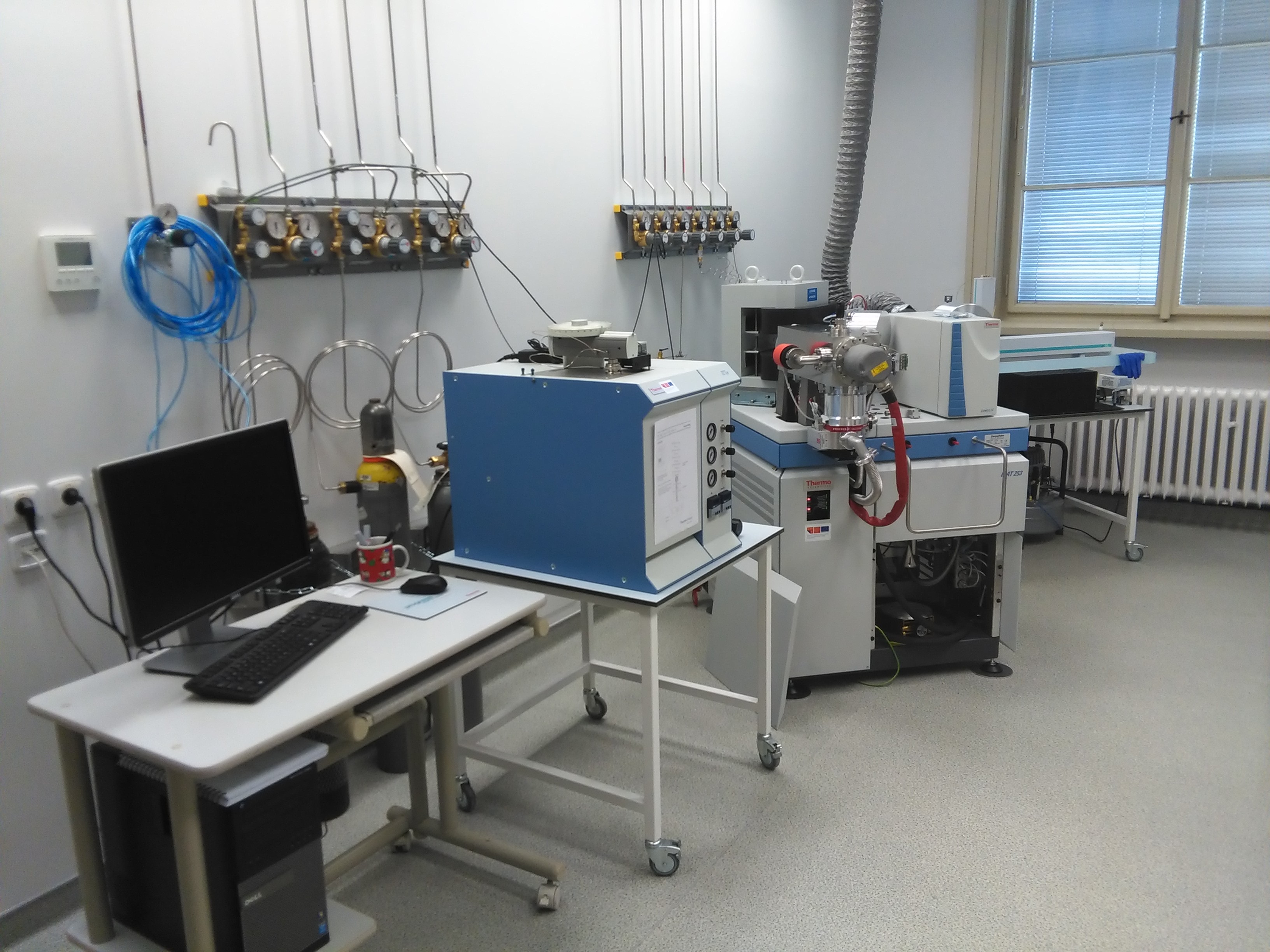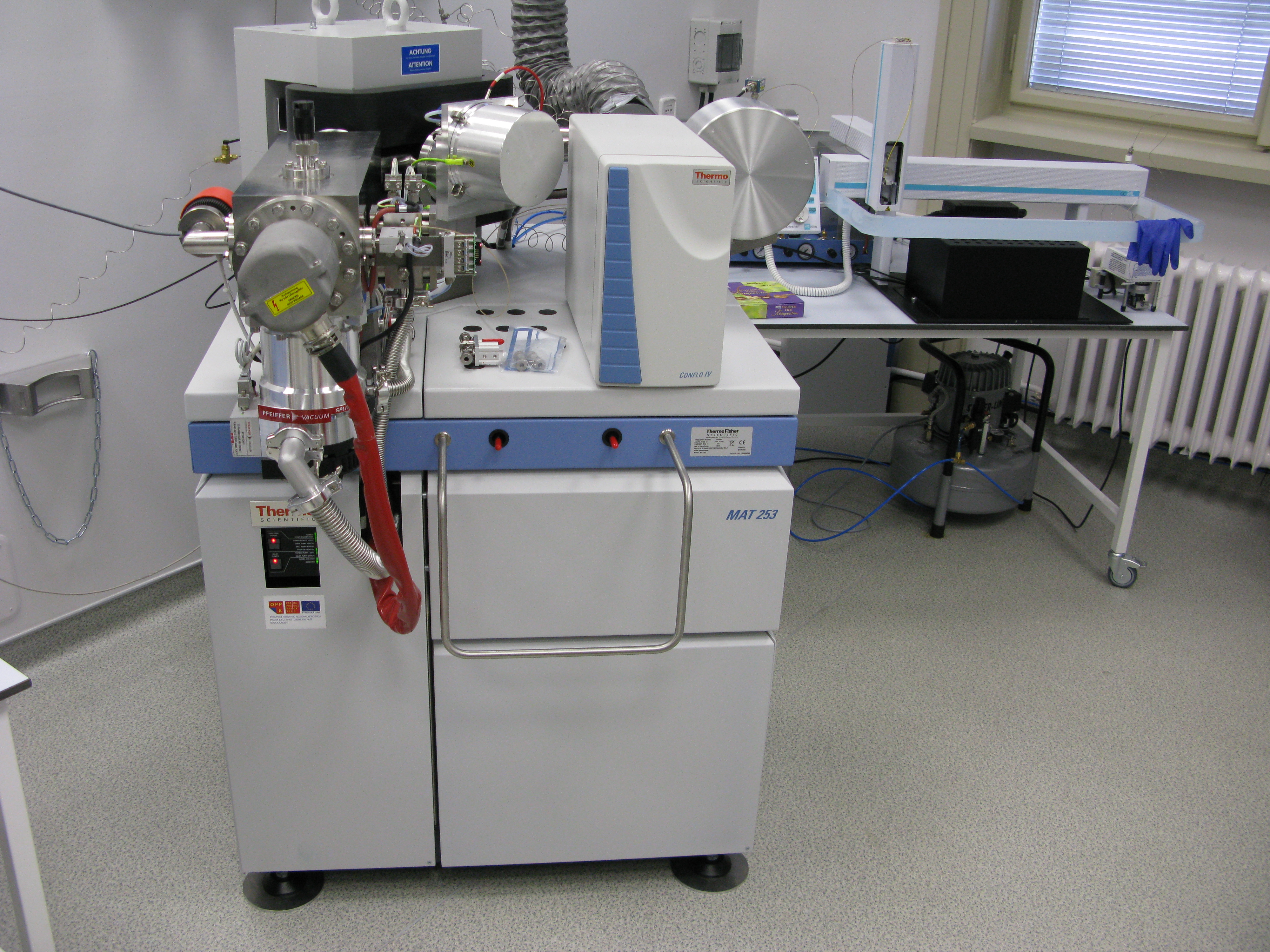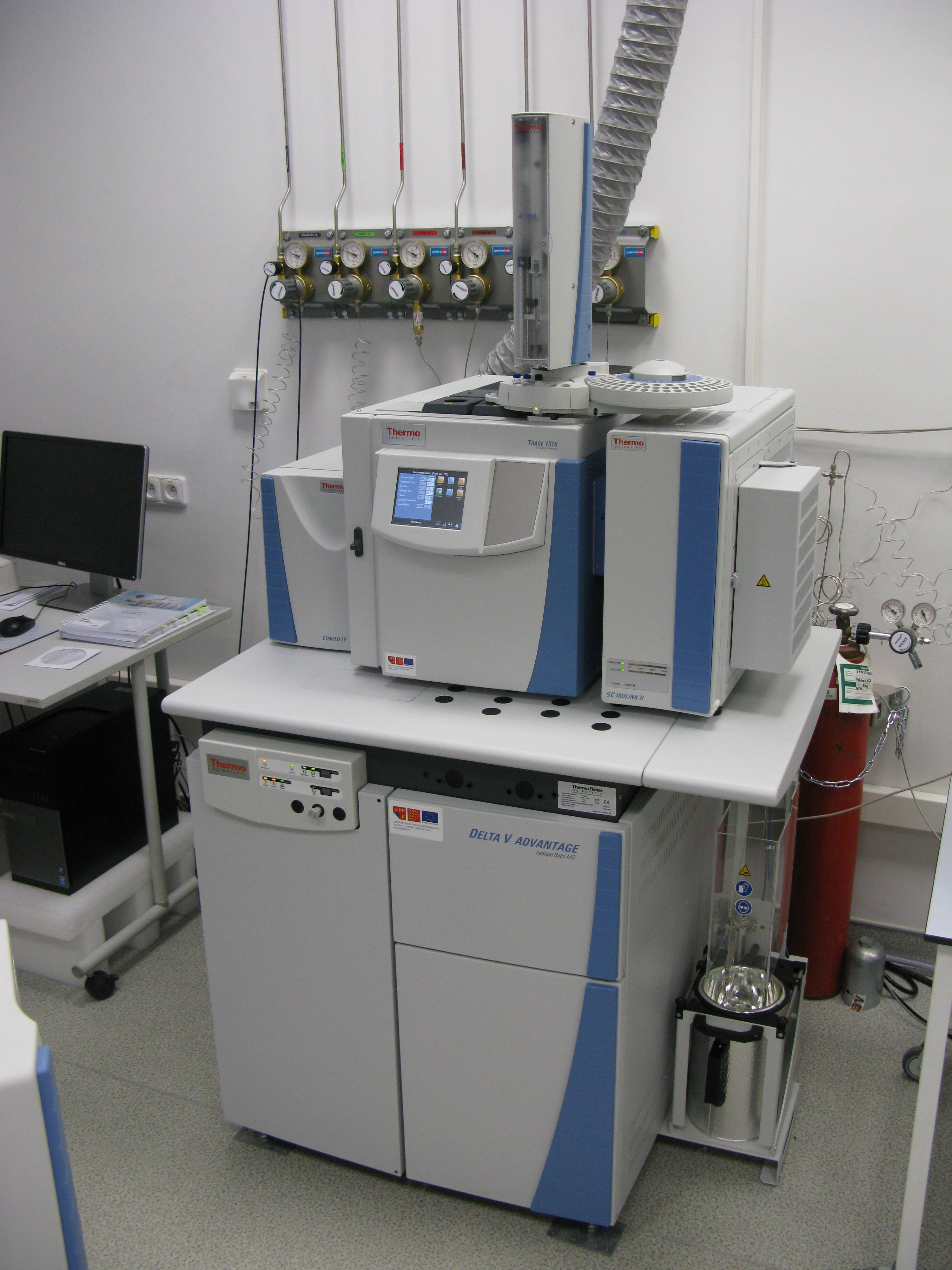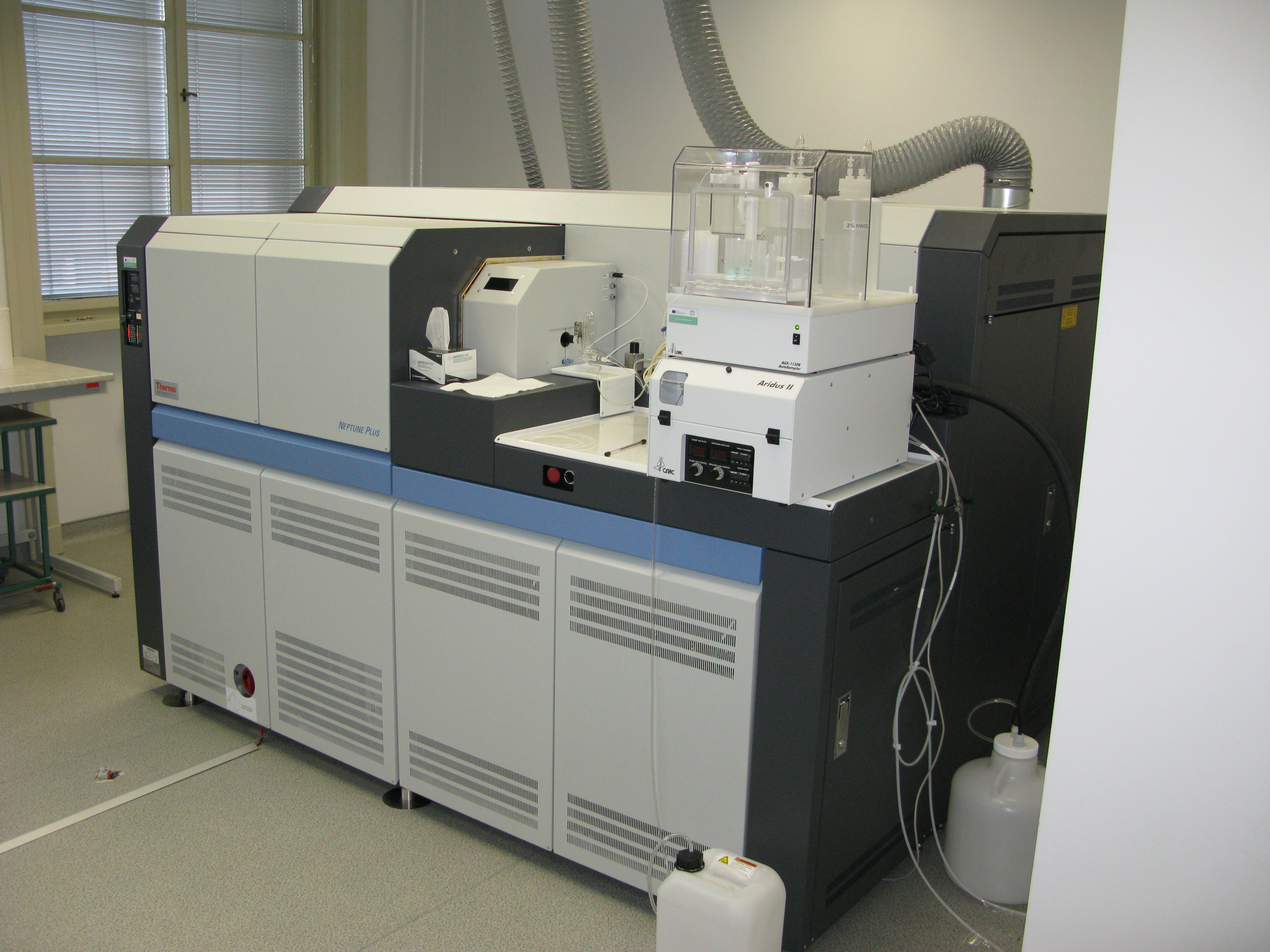Isotope Research Center
Stable and Radiogennic Isotopes Facility
 IsoLAb
IsoLAb
Geological departments of the Faculty of Science, Charles University have built up a new „Stable and radiogennic isotope research laboratory“ in 2015. The laboratory is equipped with two Thermo Scientific© IRMS spectrometers (Mat 253 and Delta V Advantage) and with associated instruments (Flash EA 2000, TC/EA, GasBench II and LC IsoLink). For the purpose of this project the IRMS Delta V Advantage will be used in combination with the elemental analyzer Flash EA 2000 (for isotopic measurements of organic C and N) and the LC IsoLink interface (for „compound specific isotope analysis“ of organic substances). Both techniques are already in use.
Isotopic composition of radiogenic elements (e.g. Sr, Nd, Ag, Pb) is determined using a high-precision isotope ratio measurements with the Thermo Scientific Neptune Plus high resolution multicollector ICP-MS system. We used powerful double-focusing mass spectrometer, with high mass resolution, variable 9× multicollectors, and 1× multi ion counting capability. The Neptune offers ground-breaking sensitivity (10-12 amplifiers), high dynamic ranges, unsurpassed linearity, and robust stability.
Contact:
Prof. Martin Mihaljevič
Charles University in Prague
Faculty of Science
Institute of geochemistry, mineralogy and mineral resources
Charles University in Prague
Albertov 6, 128 43 Praha 2
e-mail: martin.mihaljevic@natur.cuni.cz
Equipment and methods
METHODS DESCRIPTION – Flash EA 2000 and TC/EA High Temperature Conversion Elemental Analyzer
Nitrogen, carbon, sulfur, oxygen and nitrogen isotopes in organic and inorganic solid samples
Stable isotopic composition of nitrogen and carbon is determined using a Thermo Flash 2000 elemental analyzer connected to a Thermo Delta V Advantage isotope ratio mass spectrometer in a Continuous Flow IV system and oxygen and hydrogen isotopes are determined using a Thermo TC/EA analyzer connected to a Thermo MAT253 isotope ratio mass spectrometer in a Continuous Flow IV system. Minimal weight of samples depends on the wt% amount of both elements. Samples wrapped in tin capsules are combusted or high-temperature pyrolysed. Released gases (CO2, N2, O2, H2) split in a GC column are transferred to MS source through a capillary. Isotope ratios are reported as delta (δ) values and expressed relative to VPDB for δ13C and to atmospheric nitrogen for δ15N. Delta values are normalized to a calibration curve based on international standards.
 Flash 2000
Flash 2000 TC-EA
TC-EA
METHODS DESCRIPTION - GasBench II
Oxygen and carbon isotopes in carbonates
Isotopic composition of Dissolved Inorganic Carbon in water
Oxygen isotopes in water
Stable isotopic composition of oxygen and carbon in carbonates is determined using a GasBench II Carbonate Device connected to a Finnigan MAT253 isotope ratio mass spectrometer in a Continuous Flow IV system. Sample (minimum weight 20 µg) is reacted with orthophosphoric acid (density 1.94 g/dm3) at 70°C. International standard NBS 18, L-SVEC is analyzed per every ten samples. Isotope ratios are reported as delta (δ) values and expressed relative to VPDB standard.
 GasBench II
GasBench II
METHODS DESCRIPTION – Dual Inlet and MicroVolume
Oxygen and carbon isotopes in carbonates
Stable isotopic composition of oxygen and carbon in carbonates is determined using a Dual Inlet and MicroVolume connected to a Finnigan MAT253 isotope ratio mass spectrometer in a Continuous Flow IV system.
 MAT 253 + Dual Inlet and MicroVolume
MAT 253 + Dual Inlet and MicroVolume
METHODS DESCRIPTION - GC IsoLink II Interface for GC-IRMS
GC-IRMS solution provides a significant step forward in analytical performance and capability. Harnessing the combined power of the Thermo Scientific TRACE 1310 GC, GC IsoLink II preparation device and the ConFlo IV reference interface with Delta V isotope ratio MS.
 GC IsoLink II Interface for GC-IRMS
GC IsoLink II Interface for GC-IRMS
METHODS DESCRIPTION
Neptune Plus High Resolution Multicollector ICP-MS
Isotopic composition of selected elements is determined using a high-precision isotope ratio measurements with the Thermo Scientific Neptune Plus high resolution multicollector ICP-MS system. We used powerful double-focusing mass spectrometer, with high mass resolution, variable 9× multicollectors, and 1× multi ion counting capability. The Neptune offers ground-breaking sensitivity (10-12 amplifiers), high dynamic ranges, unsurpassed linearity, and robust stability.
 MC-ICP-MS Neptune Plus
MC-ICP-MS Neptune Plus
Document Actions